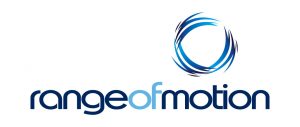
SESSION NOTES: Relative Strength (878, 879, 881, 883, 885, 887, 889, 891)
Take 20 minutes to find an ‘x’ rep max for each movement. Cycle exercises as desired.
Programming Science:
Although barbell work is often trained with a strength focus, upper body bodyweight movements are often only trained for high reps with stamina. However, the high percentage of fast twitch muscle fibres in the upper body make it perfect for adding load.
This session contains both a press element and a pull element.
Although this session revolves around finding an ‘x’ rep max, it isn’t just a testing session, there should be enough volume at high weights to give benefit for strength, power and speed development.
The ‘touch and go’ nature of these movements also build time under tension, which has a considerable metabolic effect.
The ability to cycle between exercises as you choose allows you to rest as much as possible between each set of the same type of exercise, while still being mindful of time efficiency. The 30 minute time cap gives an element of urgency, but is also a time efficient way of training as you’re able to include lighter warm-up weights in your training time.
Health and Body Composition Benefits:
Resistance training, in this case using your own body (and maybe added weight) as the load, makes you stronger. Strength is one of the greatest predictors of both your lifespan (how long you live) and your healthspan (how long you live in a healthy state).
Resistance training like this will also improve your flexibility (by going through a full range of motion), posture and coordination. It will also build stability around your joints and spine to give you a healthy musculo-skeletal system and reduce joint and back pain.
Because you’re using your own body as the form of resistance, this session will improve your strength to weight ratio – making you better able to move your body around.
As a result of this style of session, you will experience changes in blood chemistry, including favourable effects on cholesterol, blood glucose, triglyceride and lipid levels.
This session increases your lean muscle mass. Muscle is a metabolically active tissue, so increasing it will maximise how much energy your body burns at rest. This makes it an effective session to reach healthy levels of body fat, both visceral fat (around the organs) and subcutaneous fat (under your skin). After this session, your body will go through a prolonged state of ‘EPOC’ (excess post- exercise oxygen consumption), meaning you’ll continue burning energy long after you finish training – further aiding healthy body composition.
Performance Benefits:
Although this session revolves around finding an ‘x’ rep max, it isn’t just a testing session, there should be enough volume at high weights to give benefit for strength, power and speed development.
The ‘touch and go’ nature of these movements also build time under tension, which has a considerable metabolic effect.
One benefit of maximal lifting is the need for a very high level of muscle recruitment to achieve a successful, heavy lift. This can increase lifting efficiency by teaching the individual how to achieve this very high percentage of muscle recruitment.
The heavy levels of resistance are designed to increase your strength – increasing both your one rep max, and your ability to lift submaximal weights. By being stronger, you can lift more weight, and you will be able to lift submaximal weights faster and for higher reps because they’ll be at a lower percentage of your max.
The heavy levels of resistance in this session are designed to increase your upper body relative strength – increasing both your one rep max, and your ability to perform high reps of bodyweight movement. By being stronger relative to your weight, you can lift more, and you will be able to move your body faster and for higher reps because you’ll be lifting a lower percentage of your max.
As strength is an element of power, getting stronger will also improve your ability to move faster – beneficial for more power-based, explosive gymnastics movements.
This session will also improve the efficiency of your fast-twitch muscle fibres (those responsible for lifting heavy and fast), and will improve your neuromuscular efficiency (your ability to turn on a very high percentage of your muscle fibres).
Strategy:
The first ten minutes should see you quickly building up to moderate weights, cycling between each movement, adding weight as you go. In the second ten minutes, begin to build to heavy weights that require considerable effort. In the final ten minutes, aim for two sets of each movement, both of which should be very heavy.
The rep scheme in this session reduces from the previous time you completed this movement in a 20 minutes to find an ‘x’ rep max’ absolute strength session by one rep, meaning you should aim to increase from the previous time you did each of these movements.
You should complete around five sets of each movement that you would classify as ‘heavy’.
How it Should Feel:
From the 8 minute mark, each exercise should be feeling heavy, progressing to ‘very heavy’ by the 12 minute mark. The final two sets of each exercise should feel like a max effort.
Scaling Guidelines:
If you need assistance, use band assistance, rather than shortening the range of motion.
Common Mistakes:
Sacrificing technique to achieve a new max is a common fault here. Find the heaviest (or least assisted) lift you can do without technical failure.
Starting too slow and not leaving enough time for the really heavy lifts in the final ten minutes.
This is not a ‘testing’ session (like if you were just building to a new one rep max), but a training session (that is, it’s designed to make you stronger, not to test your strength). As such, you should be completing enough sets at a heavy weight to elicit an increase in strength (at least five heavy sets for each movement).




